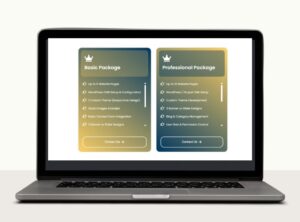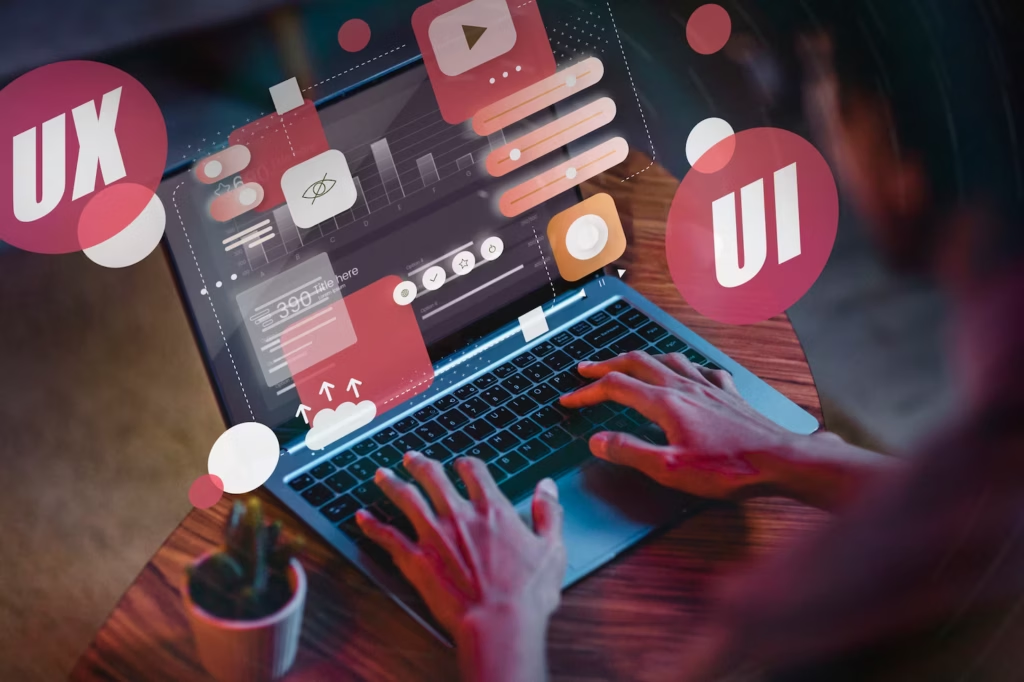Your website is often the first interaction a potential customer has with your business. In those fleeting seconds, a judgment is formed – one that could either invite a further look or drive someone straight to a competitor. In fact, 75% of website visitors admit they form an opinion about a company’s credibility based on its site design【22†L219-L227】. That’s right, three‑quarters of people will judge your business by how your website looks and feels. In 2025, web design is all about marrying aesthetics with user experience. Let’s explore why first impressions matter and what cutting‑edge web design trends can make your site stand out this year.
Why Web Design Is Critical for SMEs: For small and medium businesses, a professional website builds trust. A polished, modern design signals that you pay attention to detail and care about quality – it’s as important as a welcoming storefront on Main Street. Conversely, an outdated or clunky site can raise doubts (“If they haven’t updated their site since 2010, how up‑to‑date is their service or product?”). Moreover, good design isn’t just about looks; it directly impacts user engagement. Easy navigation, clear calls‑to‑action (CTAs), and fast‑loading pages help visitors find what they need and encourage them to take the next step (contacting you, making a purchase, etc.). In a nutshell: great web design can increase conversion rates and boost your bottom line, while bad design can send potential customers packing.
2025 Web Design Trends to Watch
Staying on top of current design trends can give your website that “wow” factor and ensure you meet user expectations. Here are some of the hottest trends in 2025 to consider incorporating:
1. Dark Mode & Light Mode Toggle: Dark mode has been popular in apps and is now common on websites. It offers a sleek look and can reduce eye strain in low‑light environments. In 2025, many sites offer theme toggles so users can switch between light and dark mode as they prefer. This personalization enhances user comfort and engagement.
2. Neumorphism and Glassmorphism: These oddly named trends are all about visual style. Neumorphism involves designs that mimic physicality – elements that look like they’re extruded from the background, creating a soft, 3D effect. Glassmorphism uses translucent “frosted glass” backgrounds with blurs, layering elements for depth. Both styles, when used sparingly, can make your site look ultra‑modern and sophisticated.
3. Micro‑Interactions: These are subtle animations or responses that happen when a user performs a small action (like hovering over a button or toggling a switch). In 2025, designers focus on delighting users with these tiny details – a button that slightly wobbles when clicked, or an icon that morphs to confirm an action. Micro‑interactions provide instant feedback, making the experience feel responsive and intuitive. They also add personality to your site, which can reinforce your brand identity.|
4. Mobile‑First and Thumb‑Friendly Design: By now, it’s no secret that a huge portion of web traffic is mobile. This year, the mobile‑first approach (designing for mobile screens and then scaling up to desktop) is absolutely standard. Specifically, designers consider thumb ergonomics – placing important buttons and navigation within easy reach of a thumb when holding a phone. Hamburger menus, sticky bottom nav bars, and swipeable carousels are common techniques to enhance mobile usability.
5. AI‑Powered Personalization: Artificial intelligence is creeping into web design, too. Websites in 2025 can use AI to personalize content on the fly. For instance, an e‑commerce site might re‑order products shown based on a user’s past browsing behavior, or a homepage might greet a returning visitor with relevant blog posts based on what they read last time. Even design layouts can adjust – like changing language, imagery, or even color scheme based on user data (location, time of day, etc.). While subtle, these AI‑driven tweaks make a user feel the site is speaking directly to them, increasing engagement.
Timeless Design Principles: Trends aside, some design principles are evergreen. Ensure fast load times (compress images, use proper caching) because no one waits for a slow site. Make sure your typography is readable – clear fonts, adequate size, and contrast with the background. Keep navigation intuitive; users should reach any page within a few clicks. And importantly, have a clear call‑to‑action on your homepage – whether it’s “Get a Quote,” “Shop Now,” or “Contact Us,” guide visitors to what you want them to do.
Conclusion: In web design, details matter – from the color of a button to the way your images scale on a phone screen. A well‑designed site not only attracts visitors but also keeps them engaged and convinces them to trust you. As we’ve seen, most people will judge your credibility by your website’s design, so investing in it is investing in your business’s reputation. If your site hasn’t been updated in a while, consider a refresh that incorporates some of 2025’s stylish yet user‑centric trends. Combining modern aesthetics with solid usability will ensure that your SME’s online presence leaves a fantastic first impression every time.

